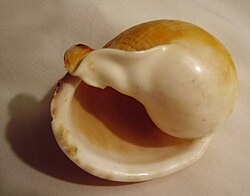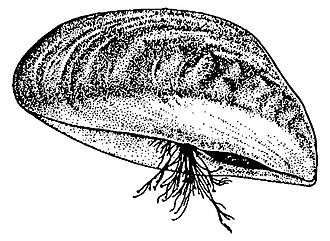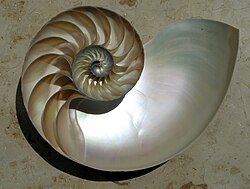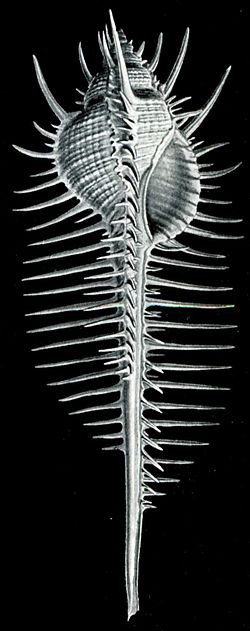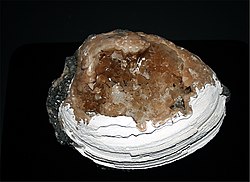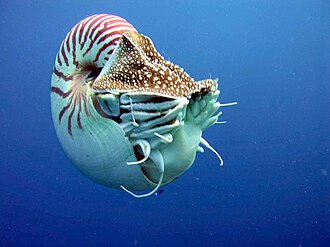Difference between revisions of "AY Honors/Shells - Advanced"
Jomegat bot (talk | contribs) (Bot: Automated import of articles) |
|||
| Line 20: | Line 20: | ||
The most challenging requirement of this honor is probably this: | The most challenging requirement of this honor is probably this: | ||
| − | <b>{{reqreq|page={{PAGENAME}}|num= | + | <b>{{reqreq|page={{PAGENAME}}|num=13}}</b> |
</translate> | </translate> | ||
Revision as of 03:28, 26 December 2020
Overview
The Challenging Part
The most challenging requirement of this honor is probably this:
13. Do one of the following:
- a. Personally find and collect 40 species of shells. List each shell as to the place and date it was found, common name, scientific name, and class.
- b. Make a collection of 50 species of shells you have found, received, or purchased.
- List each shell collected as follows: if personally found, give the information called for under letter "a" above; if received or purchased, give the name of the person from whom the shell was received, the habitat of the shell, the date of its acquisition, and its common name, scientific name, and class.
[[AY Honors/Shells - Advanced/Requirements|Tab Name/Printable Version]]
1. Have the Shells honor.
2. Define the term "mollusca" or "mollusk."
3. Learn the classification terms of mollusks, know the distinguishing characteristics of each, and become acquainted with several species under each class.
4. Distinguish between univalve and bivalve mollusks from the following considerations:
- a. Shell
- b. Mollusk body
- c. Reproduction
- d. Movements
- e. Securing food
- f. Self-preservation
5. Identify from shells or drawings and know the meaning of the following concho logical terms:
- a. Valve
- b. Apex
- c. Aperture
- d. Byssus
- e. Foot
- f. Mantle
- g. Operculum
- h. Mother of pearl
- i. Epidermis
- j. Ribs
- k. Teeth
- l. Concentric lines
- m. Canal
- n. Spines
- o. Whorls
- p. Lips
6. Explain the development of a shell. How long do mollusks live?
7. Give some facts about the life of a Strombus pugilis (fighting conch) and explain why this shell is so named.
8. Explain the activities of the shipworm.
9. What accounts for the distribution of mollusks.
10. Name two mollusks that have no shells.
11. Find answers for the following interesting questions:
- a. How are bivalve and univalve animals fastened to their shells?
- b. How is shell color controlled?
- c. What mollusk has four gills?
- d. From what sea animal was India ink formerly made?
- e. What mollusk spins a silken thread?
- f. What shells were used for money by ancient tribes?
- g. What shell is considered sacred by the Tibetans?
- h. Purple dye of ancient times came from the secretion of what mollusk?
- i. What is the source of pearls? How are they formed?
12. Name six commercial uses for shells.
13. Do one of the following:
- a. Personally find and collect 40 species of shells. List each shell as to the place and date it was found, common name, scientific name, and class.
- b. Make a collection of 50 species of shells you have found, received, or purchased.
- List each shell collected as follows: if personally found, give the information called for under letter "a" above; if received or purchased, give the name of the person from whom the shell was received, the habitat of the shell, the date of its acquisition, and its common name, scientific name, and class.
Printable Answer Key Tab Name/Edit Answer Key
1
For tips and instruction see Shells.
2
The word mollusc is derived from the French mollusque, which originated from the Latin molluscus, meaning thin-shelled, from mollis, soft.
The body of a mollusc consists of three sections; a head, with eyes or tentacles; a muscular foot; and a visceral mass housing the organs.
Both "mollusc" and "mollusk" are considered correct spelling, but mollusc seems to be the preferred spelling in scientific publications. We therefore use the spelling "mollusc", though we leave spelling in requirements alone.
3
There are ten classes of molluscs; eight of the classes have living representatives, the other two classes are known only from fossils. More than 250,000 species of mollusc are recognized and named. Snails (Gastropoda) account for about 80% of living mollusc diversity.
| Class | Major organisms | Extant species | Distribution |
| Caudofoveata | worm-like organisms | 70 | deep ocean |
| Aplacophora | solenogasters, worm-like organisms | 250 | deep ocean |
| Polyplacophora | chitons | 600 | rocky marine shorelines |
| Monoplacophora | limpet-like organisms | 11 | deep ocean |
| Gastropoda | abalone, limpets, conch, nudibranchs, sea hares, sea butterfly, snails, slugs | 150,000& | marine, freshwater, land |
| Cephalopoda | squid, octopus, cuttlefish, nautilus | 786 | marine |
| Bivalvia | clams, oysters, scallops, mussels | 8000 | marine, freshwater |
| Scaphopoda | tusk shells | 350 | marine |
| Rostroconchia † | fossils; probable ancestors of bivalves | extinct | — |
| Helcionelloida † | fossils; snail-like organisms such as Latouchella | extinct | — |
4
4a
The terms univalve and bivalve refer to the configuration of the shells of the molluscs. Univalves, such as snails, have shells consisting of one (thus uni-) piece. Bivalves, such as mussels, have shells consisting of two (thus bi-) pieces hinged together.
4b
- Univalves
- Univalve bodies could almost be described as folded such that the mouth and anus both appear the shell's opening.
- Bivalves
- Bivalves on the other hand, have flattened bodies.
4c
- Univalves
- All land snails are hermaphrodites, producing both spermatozoa and ova. In other words, each individual is both male and female. Some freshwater snails, such as Apple Snails, and marine species, such as periwinkles, have separate sexes; they are male and female. Most snails can mate when they are around 1 year old.
- Prior to reproduction, most land snails perform a ritual courtship before mating. This may last anywhere between two and twelve hours. Prolific breeders, pulmonate land snails inseminate each other in pairs to internally fertilize their ova. Each brood may consist of up to 100 eggs.
- Pulmonate land snails and slugs have a reproductive opening on one side of the body, near the front, through which the outer reproductive organs are extruded so that exchange of sperm can take place. After this, fertilization occurs and the eggs develop.
- Garden snails bury their eggs in shallow topsoil primarily while the weather is warm and damp, usually 5 to 10 cm down, digging with their foot. Egg sizes differ between species, from a 3 mm diameter in the grove snail to a 6 cm diameter in the Giant African Land Snail. After 2 to 4 weeks of favorable weather, these eggs hatch and the young emerge. Snails may lay eggs as often as once a month.
- Bivalves
- In bivalves, the sexes are usually separate, but some hermaphroditism is known. Bivalves practice external fertilization. External fertilization is a form of fertilization in which a zilo cell is united with an egg cell external to the body of the female. Thus, the fertilization is said to occur "externally". This is distinct from internal fertilization where the union of the egg and sperm occur inside the female after insemination through copulation.
- In sexual reproduction, there must be some way of getting the sperm to the egg. Since sperm are designed to be mobile in a watery environment, aquatic molluscs can make use of the water in which they live. Eggs and sperm are simultaneously shed into the water, and the sperm swim through the water to fertilize the egg in a process known as broadcast fertilization.
4d
- Univalves
- Most snails move by gliding along on their muscular foot, which is lubricated with mucus. This motion is powered by succeeding waves of muscular contraction which move down the undersurface of the foot. This muscular action is clearly visible when a snail is crawling on the glass of a window or aquarium. Snails move at a proverbially low speed (1 mm/s is a typical speed for adult Helix lucorum). They produce mucus in order to aid locomotion by reducing friction, and the mucus also helps reduce the snail's risk of mechanical injury from sharp objects. This means that they can 'walk' over sharp objects like razors without being injured.
- Bivalves
- Razor shells (Ensis spp.) can dig themselves into the sand with great speed to escape predation. Scallops can swim to escape an enemy, clapping their valves together to create a jet of water. Cockles can use their foot to leap from danger. However these methods can quickly exhaust the animal. In the razor shells the siphons can break off only to grow back later.
4e
- Bivalves
- Bivalves are unique among the molluscs for lacking a radula; they feed by siphoning and filtering large particles from water.
- Univalves
- Univalves include some that are herbivores, detritus feeders, predatory carnivores, scavengers, parasites, and also a few ciliary feeders, in which the radula is reduced or absent. The radula of a univalve is usually adapted to the food that a species eats. The simplest univalves are the limpets and abalones, herbivores that use their hard radulas to rasp at seaweeds on rocks. Many marine univalves are burrowers, and have soft siphons or tubes that extend from the mantle. Sometimes the shell has a siphonal canal to accommodate this structure. A siphon enables the animal to draw a small flow of water into their bodies. The siphon is used primarily to "taste" the water, in order to detect prey from a distance. Univalves with siphons tend to be either predators or scavengers.
4f
- Univalves
- When retracted into their shells, many snails with gills (including many marine, some freshwater and some terrestrial species) are able to protect themselves with a door-like anatomical structure called an operculum. Some snails hibernate during the winter (typically October through April in the Northern Hemisphere). They may also estivate in the summer in drought conditions. To stay moist during hibernation, a snail seals its shell opening with a dry layer of mucus called an epiphragm.
- Bivalves
- The radical structure of the bivalves affects their behaviour in several ways. the most significant is the use of the closely-fitting valves as a defence against predation and, in intertidal species such as mussels, drying out. The entire animal can be contained within the shell, which is held shut by the powerful adductor muscles. This defence is difficult to overcome except by specialist predators such as the Starfish and Oystercatcher. The file shells (Limidae) can produce a noxious secretion when threatened, and the fan shells of the same family have a unique, acid-producing organ.
5
5a
Valve is another word for shell. This is the hard covering protecting most molluscs.
5b
The apex is a word most often used to mean the tip of the spire of the shell of a gastropod. It is the first-formed, and therefore the oldest, part of the shell. To be more precise, the apex would usually be where the tip of the embryonic shell or protoconch is situated, if that is still present in the adult shell.
The word apex can also be used to refer to a similar part in other molluscan shells, however, the apex of bivalves is more usually known as the umbos, beaks or prodissoconch.
The apex of tusk shells is the small, open posterior end, and the opening itself is usually called the apical aperture.
The phrase apical whorls, or protoconch, means the whorls of the embryonic shell at the apex of the shell, especially when this is clearly distinguishable from the later whorls of the shell, otherwise known as the teleoconch.
The space under the apex of a patellate gastropod is called the apical cavity.
5c
The aperture is the main (or only) opening in the shell of a gastropod or snail. It is where the soft parts of the animal emerge. In some prosobranch gastropods, the aperture is able to be closed, and even completely sealed, with a sort of door or operculum.
The aperture of many snail shells is round, rounded, elliptical or oval. This shape corresponds roughly to the cross-section of the body whorl of the shell.
The aperture of a snail shell can have many other forms: semicircular, trilobate or auriculate. In some gastropods, the aperture is narrowed by protruding shell folds or "bacon", which help make the soft parts of the animal less vulnerable to predation.
For convenience of reference, the apertural edge or margin of a gastropod shell is divided into three areas or walls:
- The parietal wall: the area next to the penultimate whorl of the shell
- The columellar wall: the wall next to the columella
- The palatal wall: the outer free wall of the final whorl of the shell
5d
Mussels use byssus to attach to rocks and other surfaces. When a mussel's foot encounters a crevice, it creates a vacuum chamber by forcing out the air and arching up, similar to a plumber's plunger unclogging a drain. The byssus, made of keratin and other proteins, is spewed into this chamber, and bubbles into a sticky foam. By curling its foot into a tube and pumping the foam, the mussel produces sticky threads about the size of a human hair. It varnishes the threads with another protein, resulting in an adhesive.
Byssus is a remarkable adhesive that is neither degraded nor deformed by water as are synthetic adhesives. This has spurred genetic engineers to insert mussel DNA into yeast cells for translating the genes into the appropriate proteins.
5e
The foot is an organ that can be extended outside the shell, and is used as a means of locomotion. It is most common in univalves.
5f
The mantle is an important part of the anatomy of molluscs. It is the dorsal body wall which covers the visceral mass.
In many, but by no means all, species of molluscs, the epidermis of the mantle secretes calcium carbonate and creates a shell.
The word "mantle" (a old word, meaning cloak) is used for this anatomical structure because in many kinds of molluscs, the edge of the mantle extends beyond the main part of the body, forming flaps or double-folded structures.
5g
The operculum, meaning little lid, (plural: opercula or operculums) is a corneous or calcareous structure which exists in some groups of marine, freshwater, and land snails or gastropods. It is present in most but not all gastropods that have shells and gills. Pulmonate snails do not have opercula, but some terrestrial species are capable of secreting an epiphragm.
In its most typical condition, an operculum serves to close the opening or aperture of the shell when the soft parts of the animal are withdrawn into the shell.
An operculum can vary in shape greatly from one family of gastropods to another, but an operculum is fairly often circular, or more or less oval in shape. In species where the operculum fits snugly, its outline corresponds exactly to the shape of the aperture of the shell.
5h
Nacre, also known as mother of pearl, is an organic-inorganic composite material produced by some molluscs as an inner shell layer. It is exceptionally strong, resilient, and iridescent. Nacre is found in some bivalves, some gastropods and some cephalopods. The inner shell layer in most molluscs however is merely porcellaneous, in other words shiny like a china plate, not iridescent.
Pearls and the inside layer of the pearl oyster shells and the freshwater pearl mussel shells are made of nacre. Many other families of molluscs also have an inner shell layer which is nacreous, including gastropods such as the Haliotidae, the Trochidae and the Turbinidae.
5i
The epidermis is the outermost layer of the mantle. In many, but by no means all, species of molluscs, the epidermis of the mantle secretes calcium carbonate and creates a shell.
5j
Ribs are strong, well-defined ridges on the surface of the shell.
5k
The radula is a toothed chitinous ribbon which is present in the mouth of most but not all classes of molluscs. It does not exist in any phyla other than the Mollusca.
The radula is usually used for scraping, cutting and chewing food before it enters the esophagus. It is present in all classes of molluscs except the bivalves.
5l
Concentric lines are circular growth rings on the outside of a shell. Concentric rings are circles of different diameters having a common center. Characteristics of the concentric lines (spacing, definition, etc.) can be used as an aid to identifying a mollusc.
5m
In some sea snails, (marine gastropod molluscs in the infraorder Neogastropoda), the animal has an anterior extension of the mantle called a siphon, through which water is drawn into the mantle and over the gill. This siphon is a soft fleshy tube which also serves to "smell" or "taste" the water in order to locate a possible source of food.
In many (but not all) neogastropods where the siphon is particularly long, the structure of the shell has been modified in order to house and protect the soft structure of the siphon. Thus the siphonal canal is a semitubular extension of the aperture of the shells of some marine gastropods, through which the siphon is extended when the animal is active.
5n
Spines are sharply pointed spurs protruding from a mollusc's shell. Murexes and conches have prominent spines.
5o
A whorl is a single, complete 360° turn in the spiral growth of a mollusc shell. A mollusc shell is basically a long tube, usually coiled in a spiral for strength and compactness. The number of whorls in the shell depend on various factors in the geometric growth.
The number of whorls differs in various groups, with the family Turritellidae having very high spired shells with a large number of whorls and hence a relatively small aperture.
- Apical whorls—those whorls near the apex or tip of the shell.
- Body whorl—The most recently formed whorl of a spiral shell.
- Nuclear whorl(s)—small, generally smooth whorls formed within the egg and constituting the apex of the shell.
- Protoconch—a larval shell of a mollusc; also refers to protoconch whorls of an adult shell.
- Teleoconch—all the whorls of a shell after the protoconch whorls.
5p
Lips are the curled section of shell surrounding the aperture. Lips can curl outward, as with the conch, or inward, as with the cowrie.
6
In those molluscs which have a shell, the shell grows gradually over the lifetime of the mollusc by the addition of calcium carbonate to the leading edge or opening, and thus the shell gradually becomes longer and wider, in an increasing spiral shape, to better accommodate the growing animal inside. The animal also thickens the shell as it grows, so that the shell stays proportionately strong for its size.
A mollusc shell is formed, repaired and maintained by a part of the anatomy called the mantle. Any injuries to or abnormal conditions of the mantle are usually reflected in the shape and form and even color of the shell. When the animal encounters harsh conditions which limit its food supply, or otherwise cause it to become dormant for a while, the mantle often ceases to produce the shell substance. When conditions improve again and the mantle resumes its task, a "growth line" which extends the entire length of the shell is produced, and the pattern and even the colors on the shell after these dormant periods are sometimes quite different from previous colors and patterns.
Interestingly, within some species of mollusc there is often a surprising degree of variation in the exact shape, pattern, ornamentation, and color of the shell.
The longest lived mollusc is the Arctica islandica (Ocean Quahog). Animals of this species close to 400 years old are not uncommon.
7
The West Indian Fighting Conch is an aggressive sea snail with a nasty sting which it uses to defend itself against marine predators. These shells are best collected when the tide goes out, as great numbers of them suddenly emerge from the sand and retreat to the surf. If one is flipped over, it can right itself using its sharp operculum.
8
Shipworms are not worms at all, but rather a group of unusual saltwater clams with very reduced shells, notorious for boring into (and eventually destroying) wooden structures which are immersed in sea water, including piers, docks and wooden ships. Sometimes called "termites of the sea", they are marine bivalve mollusks (Eulamellibranchiata) in the family Teredinidae.
They bore into submerged wood, and bacteria in a special organ called the gland of Deshayes enable them to digest cellulose. The excavated burrow is usually lined with a calcareous tube.
The shipworms belong to several genera, of which Teredo is the most commonly mentioned. The best-known species is Teredo navalis. Historically, Teredo concentrations in the Caribbean Sea have been substantially higher than in most other saltwater bodies.
Shipworms have slender worm-like forms, but nonetheless possess the characteristic structures of bivalves. The valves of the shell of shipworms are small separate parts located at the anterior end of the worm, used for excavating the burrow. Shipworms greatly damage wooden hulls and marine piling and have been the subject of much study to find methods to avoid their attacks.
In the early 1800s, the behavior and anatomy of the shipworm inspired the great British engineer, Marc Brunel. Based on his observations of how the shipworm's valves simultaneously enable it to tunnel through wood and protect it from being crushed by the swelling timber, Brunel designed an ingenious modular iron tunnelling framework - a tunnelling shield - which enabled workers to successfully tunnel through the highly unstable riverbed beneath the Thames. The Thames Tunnel was the first successful large tunnel ever built under a navigable river.
9
molluscs have few requirements in order for them to thrive. They need moisture, but if they find themselves in a dry environment, they are able to seal themselves (and their moisture) inside their shells until external moisture becomes available again. Thus, mollusks can be found in nearly every habitat on Earth - even deserts!
10
11
11a
The muscles of both types of molluscs attach directly to the shell. These animals (including snails) cannot leave their shells and return any more than a turtle can leave its shell. The shell serves as the animal's skeleton.
11b
The outer edge of a mollusc's mantle contains glands that secrete color pigments during shell formation. These pigments control the colors on the outside of the shell. The iridescence on the inside of the shell is caused by alternating layers of calcite and aragonite refracting different wavelengths of light by different amounts depending on the viewing angle.
11c
The 'Nautilus has two pairs of gills (that's four!).
11d
Cuttlefish have ink, like squid and octopuses. This ink was formerly an important dye, called sepia. Today artificial dyes have replaced natural sepia.
11e
Several molluscs spin a byssus which is used to anchor them to a substrate. These include mussels in the family Mytilidae and the zebra mussel (Dreissena polymorpha). However, the mollusc with perhaps the most extensive byssus is the rigid pen shell (Atrina rigida). Like most pen shells, A. rigida lives in soft bottoms, with the majority of the shell buried, point down, leaving only a few inches exposed, held in place by an extensive net of byssal threads.
11f
Many people find the very rounded, shiny, porcelain-like shells of cowries pleasing to look at and to handle. Shells of certain species have historically been used as currency in several parts of the world, as well as being used, in the past and present, very extensively in jewelry, and for other decorative and ceremonial purposes.
11g
Tibetan Buddhists make use of a particular set of eight auspicious symbols, ashtamangala, in household and public art. The chank shell or conch is one of these eight symbols:
- Conch
- Knot
- Fish
- Banner
- Lotus
- Parasol
- Urn
- Wheel
11h
Hexaplex trunculus (also known as Murex trunculus or the banded dye-murex) is a medium-sized species of sea snail.
This species of sea snail is important historically because its hypobranchial gland secretes a mucus that the ancient Canaanites/Phoenicians used as a distinctive purple-blue indigo dye. One of the dye's main chemical ingredients is indigotin, and if left in the sun for a few minutes before becoming fast, its color turns to a blue indigo (like blue jeans).
11i
Nacre, also known as mother of pearl, is an important part of the shell structure in many gastropod and bivalve molluscs especially the more ancient families such as top shells and pearl oysters. Like the other calcareous layers of the shell, the nacre is created by the epithelial cells (formed by the germ layer ectoderm) of the mantle tissue. mollusc blood is rich in dissolved calcium, and during shell deposition, the calcium is concentrated out from the blood and crystallized as calcium carbonate. Nacre is continually deposited onto the inner surface of the animal's shell (the iridescent nacreous layer or mother of pearl). This is done both as a means to thicken, strengthen and smooth the inner surface of the shell itself and as a defense against parasitic organisms and damaging detritus.
When a mollusc is invaded by a parasite or is irritated by a foreign object that the animal cannot eject, a process known as encystation entombs the offending entity in successive, concentric layers of inner shell material, which in some cases is nacre. This process eventually forms what we call pearls and continues for as long as the mollusc lives. Almost any species of bivalve or gastropod is capable of producing "pearls", even molluscs which have no inner nacreous layer. However, only a few species, such as the famous pearl oysters, can create pearls which are highly prized.
12
- Musical Instruments
- Key touches and various decorations on musical instruments such as saxophones, trumpets, violins, banjos, tamburitzas and guitars are sometimes made of mother of pearl. It is used as inlays on many guitar fretboards.
- Clothing
- Mother of pearl buttons can be found on a variety of clothing such as shirts, skirts and coats.
- Decorative Inlays
- Nacre is also used as a decorative feature of watch faces, knives, guns and jewelry.
- Building Material
- Instead of using a marble or tile base, the mother of pearl tesserae can be glued to a fiberglass mesh. The result is a lightweight material that offers a seamless installation, and there is no limit to the sheet size. Mother of pearl sheets may be used on interior floors, exterior and interior walls, countertops, doors and ceilings. Insertion into architectural elements, such as columns or furniture is easily accomplished. Conch shells are occasionally used as a building material, either in place of bricks or as bulk for landfill.
- Jewelry
- Pearls are highly prized jewelry components.
- Souvenirs
- In some countries, cleaned Queen Conch (Strombus gigas) shells or polished fragments are sold, mainly to tourists, as souvenirs or in jewelry. Without a permit, however, export is a breach of CITES regulations and may lead to arrest. This is most likely to occur on return to the tourist's home country while clearing customs. In the UK conch shells are the ninth most seized import.
- Pets
- Snails are often kept in aquariums along with fish.
13
- a. Personally find and collect 40 species of shells. List each shell as to the place and date it was found, common name, scientific name, and class.
- b. Make a collection of 50 species of shells you have found, received, or purchased.
- List each shell collected as follows: if personally found, give the information called for under letter "a" above; if received or purchased, give the name of the person from whom the shell was received, the habitat of the shell, the date of its acquisition, and its common name, scientific name, and class.
The best approach here is to get a good field guide and then try to identify the shells you have found.
The five classifications of seashells are:
- Gastropoda
- (snails, conches, etc.)
- Cephalapoda
- Such as Spirula spirula. Although the whole animal is rarely seen, the internal shell is very light and commonly floats ashore on beaches. The internal shell of this animal is known as the "ram's horn shell".
- Bivalvia
- (clams, mussels, etc.)
- Polyplacophora
- (chitons)
- Scaphopoda
- (tusk shells)
If you opt to purchase your collection, one possibility is to start with a kit containing specimens from all five of these classes. Seashells.com carries a such a kit, reasonably-priced.
References
Content on this wiki is generated by people like you, and no one has created a lesson plan for this honor yet. You could do that and make the world a better place.
See AY Honors/Model Lesson Plan if you need ideas for creating one.
- ↑ Ponder, Winston F. and Lindberg, David R. (Eds.) (2008) Phylogeny and Evolution of the Mollusca. Berkeley: University of California Press. 481 pp. ISBN 978-0520250925.

